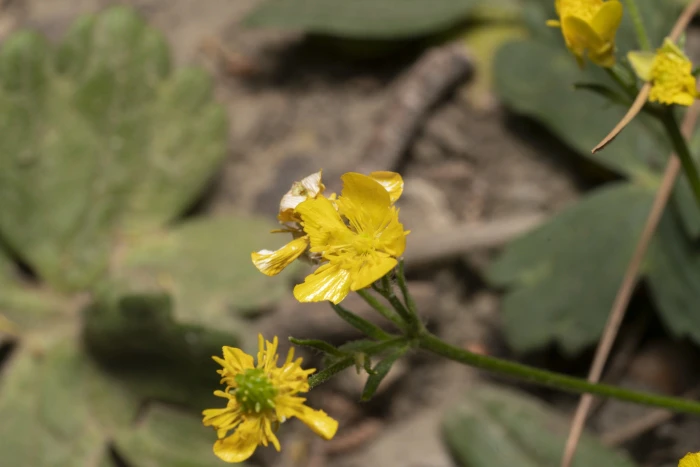Naples Buttercup
(Ranunculus neapolitanus)
Naples Buttercup (Ranunculus neapolitanus)
/
/

Eleftherios Katsillis
CC BY 4.0
Image By:
Eleftherios Katsillis
Recorded By:
Copyright:
CC BY 4.0
Copyright Notice:
Photo by: Eleftherios Katsillis | License Type: CC BY 4.0 | License URL: http://creativecommons.org/licenses/by/4.0/ | Rights Holder: Eleftherios Katsillis | Publisher: iNaturalist | Date Created: 2021-05-11T19:53:35-07:00 |
























Estimated Native Range
Climate Requirements for Kendall West, Florida
| This Plant | Your Site | Plant Suitability for Your Location | ||
|---|---|---|---|---|
| • Precipitation | 7" - 71" | 59" | Aquatic | Aquatic |
| • High Temp. | 60°F - 98°F | 90°F | Your summer temperatures are normal for this plant. | Excellent |
| • Low Temp. | 12°F - 54°F | 58°F | OK, but your winter temperatures are warmer than normal for this plant | OK |
This plant may not grow well at your location - your precipitation is too high.
Summary
Ranunculus neapolitanus, commonly known as Naples Buttercup or Lesser Celandine, is a perennial herb native to Central and Southern Europe, as well as North Africa. It is typically found in a variety of habitats including deciduous woodlands, meadows, and along stream banks, where it forms a low-growing carpet. This plant grows at a moderate rate to a height of 0.5-2 feet (0.15-0.6 meters) and a spread of 0.5-1 feet (0.2-0.3 meters). The Naples Buttercup is characterized by its glossy, dark green, heart-shaped leaves and bright yellow, showy flowers that bloom in early spring, providing an early source of nectar for pollinators.
The plant is valued for its early spring flowers and can be used as a ground cover in woodland gardens, borders, and naturalized areas. It is also appreciated for its ability to thrive in damp, shady conditions where other plants might struggle. Naples Buttercup prefers full sun to part shade and grows best in moist, well-drained soils such as clay, loam, or sandy soils. It requires medium amounts of water and can tolerate short periods of drought once established. While it is generally low-maintenance, it can become invasive in some areas, spreading rapidly by tuberous roots and self-seeding, which gardeners should be aware of when planting.CC BY-SA 4.0
The plant is valued for its early spring flowers and can be used as a ground cover in woodland gardens, borders, and naturalized areas. It is also appreciated for its ability to thrive in damp, shady conditions where other plants might struggle. Naples Buttercup prefers full sun to part shade and grows best in moist, well-drained soils such as clay, loam, or sandy soils. It requires medium amounts of water and can tolerate short periods of drought once established. While it is generally low-maintenance, it can become invasive in some areas, spreading rapidly by tuberous roots and self-seeding, which gardeners should be aware of when planting.CC BY-SA 4.0
Plant Description
- Plant Type:
- Height: 0.5-2 feet
- Width: 0.5-1 feet
- Growth Rate: Moderate
- Flower Color: Yellow
- Flowering Season: Spring
- Leaf Retention: Deciduous
Growth Requirements
- Sun: Full Sun, Part Shade
- Water: Medium
- Drainage: Fast, Medium
Common Uses
Border Plant, Low Maintenance
Natural Habitat
Native to Central and Southern Europe, and North Africa, typically found in deciduous woodlands, meadows, and along stream banks
Other Names
Common Names: Winter Buttercup , Lesser Celandine
Scientific Names: Ranunculus neapolitanus , Ranunculus adscendens , Ranunculus aleae , Ranunculus ascendens , Ranunculus balearicus , Ranunculus bipinnatus , Ranunculus broteri , Ranunculus broteroi , Ranunculus bulbosus subsp. adscendens , Ranunculus bulbosus subsp. aleae
GBIF Accepted Name: Ranunculus neapolitanus